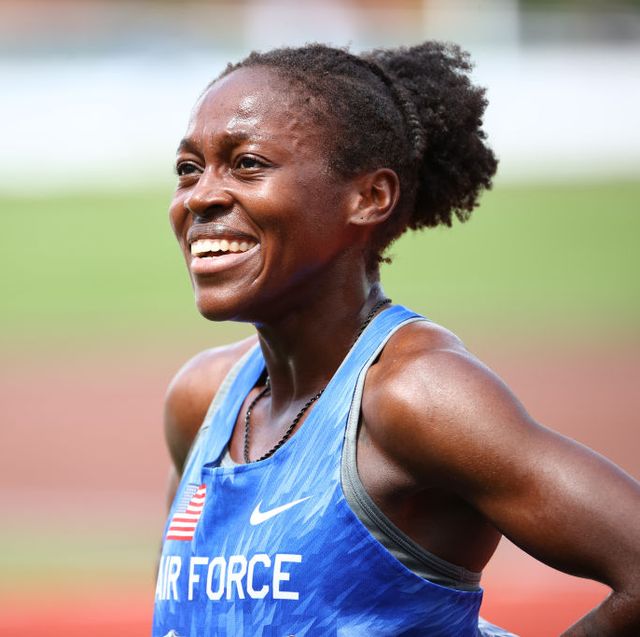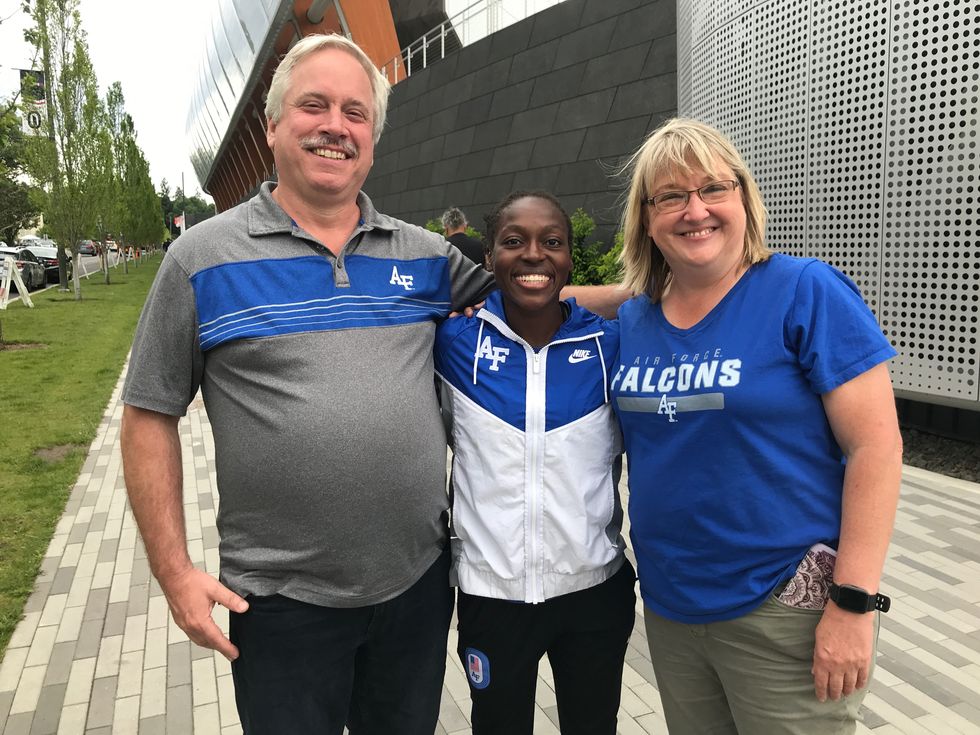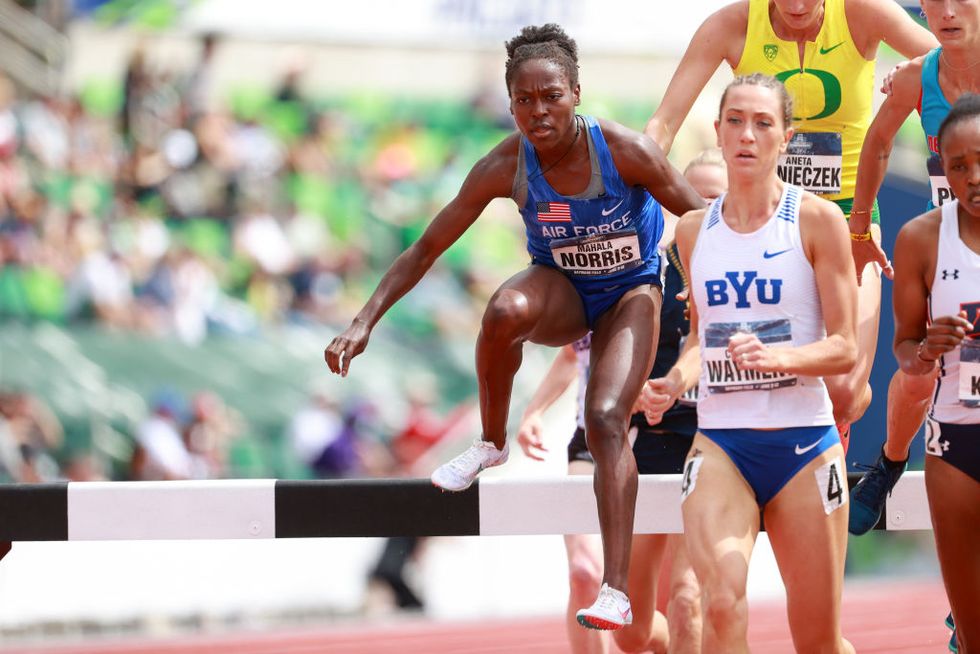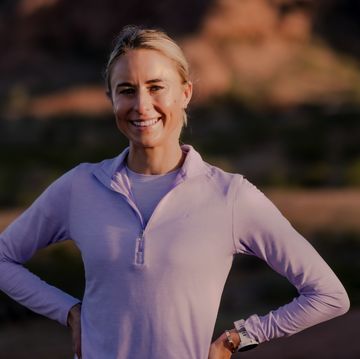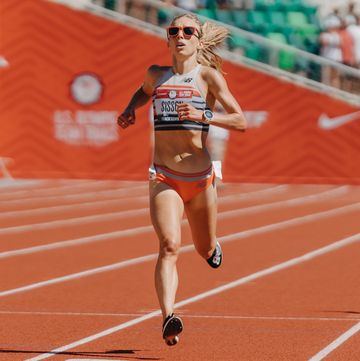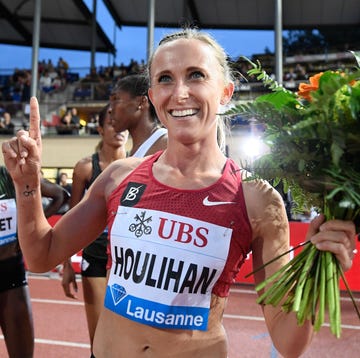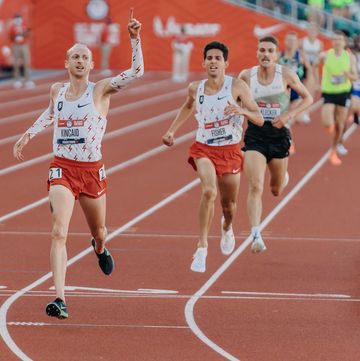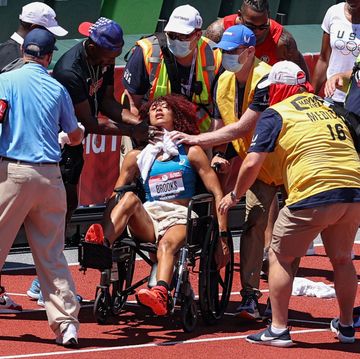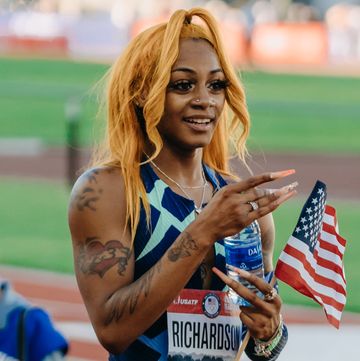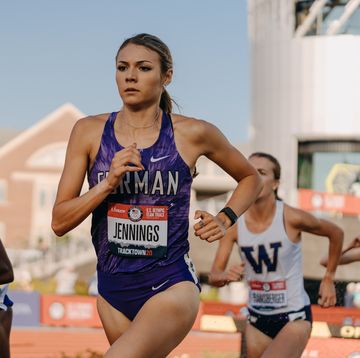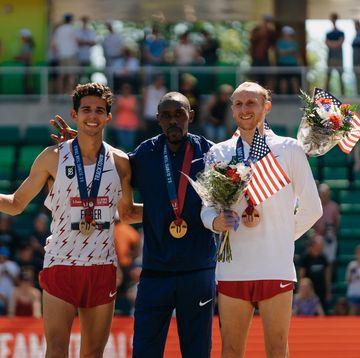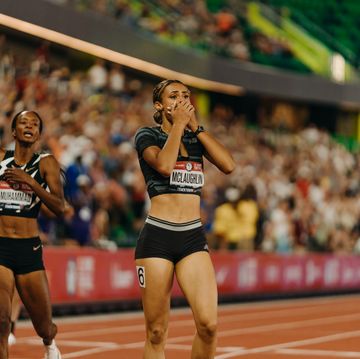The 3,000-meter steeplechase is the craziest event on the track. With 35 barriers, seven of which lead into a water pit, anyone can fall at any time, and favorites can have their dreams dashed in an instant.
That’s what happened at the NCAA Outdoor Track and Field Championships on June 12. Courtney Wayment of BYU stumbled at the last water jump, leaving the door open in the final 150 meters for Mahala (pronounced ma-HAY-la) Norris of the Air Force Academy. Norris cleared the final barrier in third place, but kicked to victory—by 0.05 seconds—in the race’s final 10 meters. Her winning time, 9:31.79, was a personal best by almost six seconds.
Here’s what we know about Norris, 23, heading into the first round of the women’s steeplechase at the U.S. Olympic Track and Field Trials.
She’s an officer in the Air Force
Norris graduated in May and is now a second lieutenant in the Air Force. After her running ends this summer—whether it’s at the Trials in Eugene, Oregon, or whether she makes the Tokyo Olympic team—she’ll be stationed at Vandenberg Space Force Base near Lompoc, California. She’s considering entering the Air Force’s World Class Athlete Program in 2022.
Norris is only 4-foot-11
Height is considered an asset in steeplechase. It’s more important in the men’s steeplechase, which has barriers that are 36 inches high, than in the women’s, which has 30-inch barriers. Her coach at Air Force, Ryan Cole, thinks she was the shortest NCAA champion, but her strength and powerful kick help her.
“She’s a freak athlete,” Cole told Runner’s World outside of Hayward Field after her NCAA victory. “Freak in a good way. And she’s tough and kind of adventurous, and that bodes well in the steeple.”
She’s a novice
Norris comes into the Olympic Trials having raced the event only five times. She first started practicing as a sophomore at Air Force, and she planned to race it her junior year—but then COVID-19 canceled that season. So she made her debut on April 30 in a college race, running 10:03.85. In her second steeple, she won her conference meet in 9:44.10. In her third, the regional qualifying race for NCAAs, she fell over a barrier, got up and finished sixth in 9:54.39, good enough to qualify for nationals. In her preliminary at NCAAs, she was fourth in her heat (9:37.53) before winning that final by a fraction of a second over Joyce Kimeli of Auburn.
“The plan was just to hang with the top group and really focus on Joyce and Courtney, and then if I was still with them in the last two laps or so, I just had to focus on the finish and the kick, which I always have,” Norris said.
Norris runs extra distance
Because she’s still inexperienced, Norris often runs out in lane 2 to get a clear look at the upcoming hurdles, which means each race she’s running well more than 3,000 meters. “Every steeple, she goes wide,” Cole said. “She wants to have lots of room.” She was able to pull out the win at the NCAA ranks, but that extra running might hurt her against the pros.
Norris excels at the water jump, though, and she likes it. “Honestly I do find those very fun,” she said. “Just a little splash.”
The women’s steeplechase in the U.S. has long been dominated by three names: Emma Coburn (the 2016 Olympic bronze medalist), Courtney Frerichs (the American record holder), and Colleen Quigley. But Quigley announced yesterday that she won’t be competing at the Trials due to injury, which leaves an opening for a new face. Could it be Norris? She is currently ninth-fastest on the entry list.
She has room for improvement
Norris has already had an amazing year. She finished fourth in the 5,000 meters at the NCAA Indoor Championships, and then a few days later, fourth at the NCAA Cross-Country Championships, which had been rescheduled due to the pandemic.
But Norris doesn’t train as much as many college athletes. Her mileage is the highest it has ever been, at about 50 miles per week, with a day off per week. Her coach has brought her along slowly and thinks she could get much faster as she improves her steeplechase technique and adapts to a heavier training load.
Hayward Field is home field for her
Norris—whose parents, Teresa and Doug, adopted her from Haiti when she was nine months old—grew up in nearby Roseburg, Oregon, one hour south of Eugene. She played soccer and basketball in high school, and she never won a state title in track; her best finish was third in the 1500 meters as a high school junior. The fans in Hayward Field, who didn’t know her in high school, will certainly know her now. Expect a big ovation when she’s introduced.

Sarah Lorge Butler is a writer and editor living in Eugene, Oregon, and her stories about the sport, its trends, and fascinating individuals have appeared in Runner’s World since 2005. She is the author of two popular fitness books, Run Your Butt Off! and Walk Your Butt Off!
